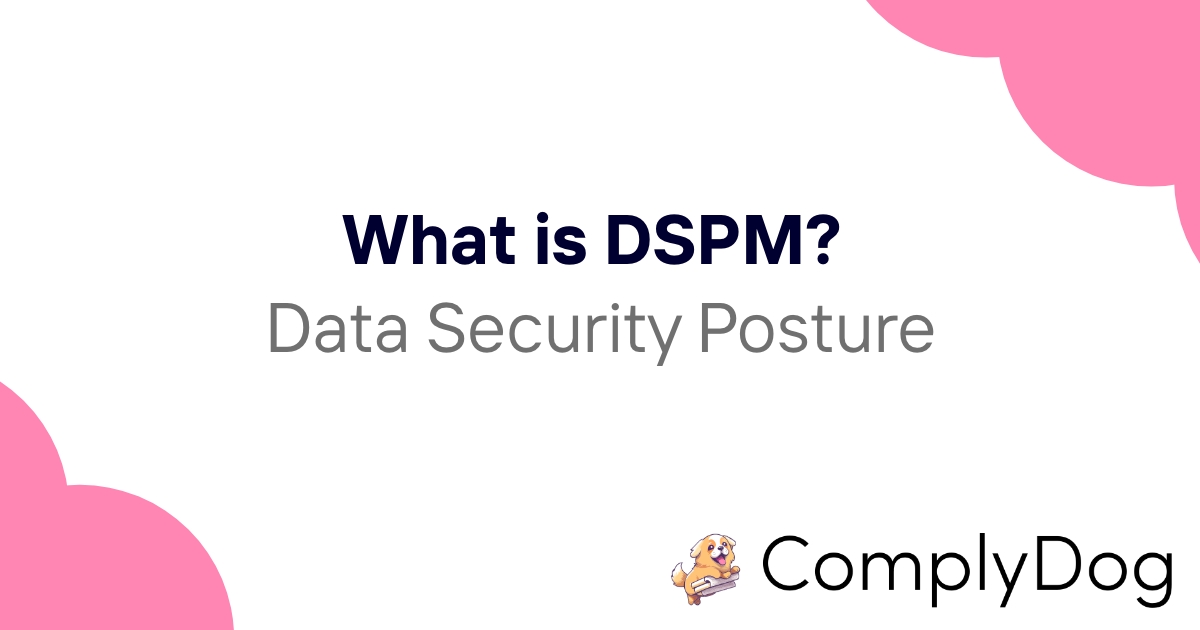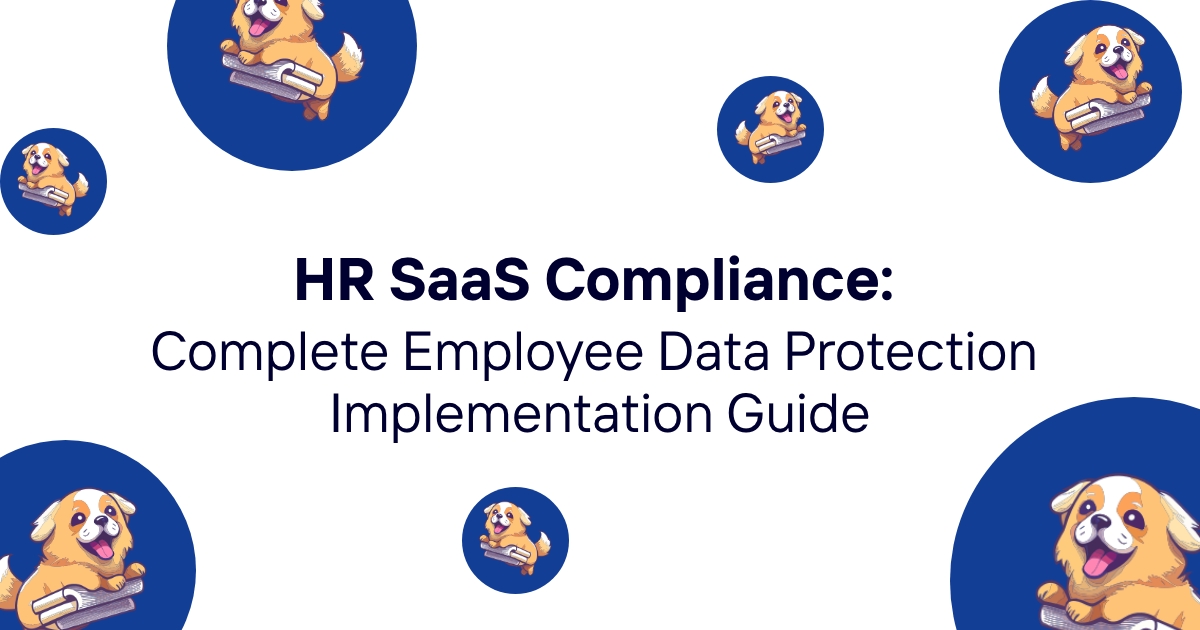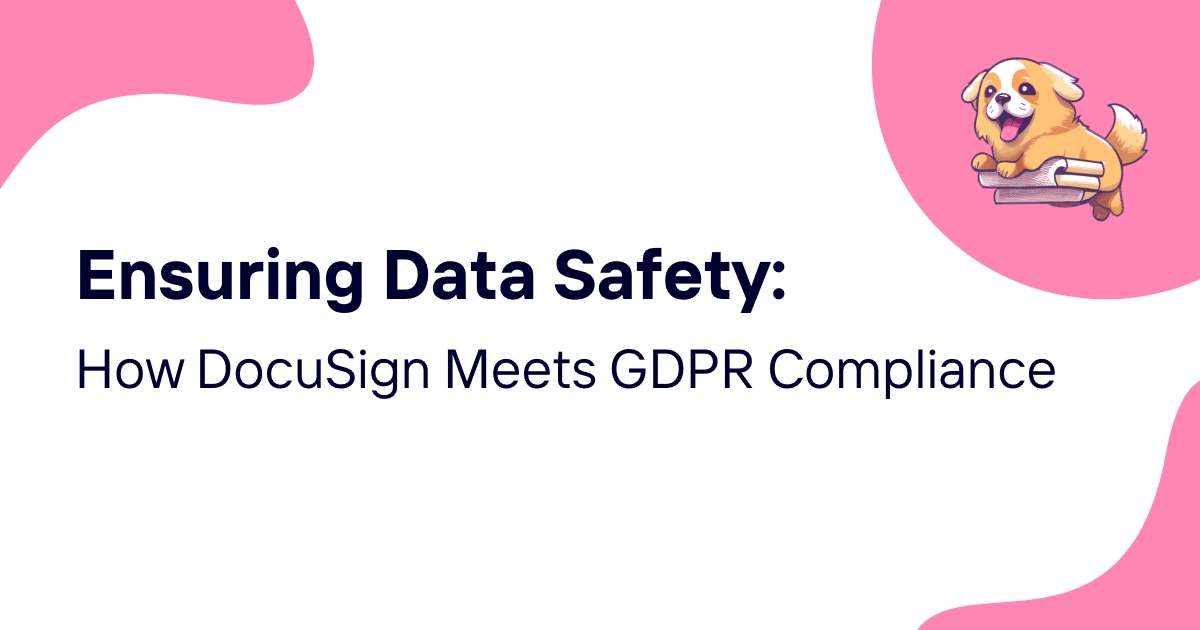Most organizations have no clue where their sensitive data actually lives. That statement might sound dramatic, but it reflects a harsh reality facing businesses across every industry. With cloud adoption accelerating and remote work becoming the norm, data has scattered across countless systems, applications, and environments—often without proper oversight or protection.
Data security posture management (DSPM) emerges as a solution to this chaos. Rather than playing defense with traditional perimeter-based security models, DSPM flips the script by focusing directly on the data itself. It's like having a dedicated bodyguard for your most valuable information assets, one that never sleeps and always knows where they are.
But DSPM isn't just another security acronym to add to your growing list. It represents a fundamental shift in how organizations think about protecting their information. Instead of securing the castle walls and hoping for the best, DSPM tracks down every piece of sensitive data, assesses its vulnerabilities, and implements targeted protection measures.
Table of contents
- What is data security posture management?
- Why DSPM matters in modern security strategies
- The four core components of DSPM
- DSPM vs other security technologies
- Integration capabilities and ecosystem connections
- Implementation workflows and best practices
- Common challenges and solutions
- Regulatory compliance and DSPM
- Future trends in data security posture management
- Building your DSPM strategy
What is data security posture management?
Data security posture management represents a cybersecurity discipline that identifies, classifies, and protects sensitive information across multiple environments. Unlike traditional security approaches that focus on network perimeters or endpoint protection, DSPM takes a data-centric view of security.
The concept gained significant traction after Gartner highlighted it in their 2022 Hype Cycle for Data Security. Some industry experts call it "data-first" security because it inverts conventional protection models. Rather than securing the infrastructure that houses data, DSPM secures the data directly—regardless of where it resides or how it moves through your organization.
This approach proves particularly valuable for organizations dealing with complex, distributed data environments. Cloud-native applications, microservices architectures, and multi-cloud deployments create blind spots that traditional security tools often miss. DSPM solutions shine a light into these dark corners, revealing data that might otherwise remain unprotected.
The data-first philosophy
Traditional security models operate on the assumption that if you secure the perimeter, you secure the data inside. This assumption breaks down in modern environments where data moves freely between on-premises systems, public clouds, private clouds, and SaaS applications. A single application might store user data in Amazon S3, process it in Microsoft Azure, and cache results in Google Cloud Platform—all while syncing with an on-premises database.
DSPM acknowledges this reality by treating data as the primary security concern. It doesn't matter if your database runs on AWS, Azure, or in your own data center. What matters is that the personal information inside that database receives appropriate protection based on its sensitivity level and regulatory requirements.
Why DSPM matters in modern security strategies
The explosion of cloud computing, DevOps practices, and artificial intelligence has created new categories of data security risks that traditional tools struggle to address. These risks center around what security professionals call "shadow data"—information that gets copied, replicated, or stored in locations that fall outside normal security governance.
Consider a typical development scenario. A DevOps team spins up dozens of temporary environments for testing new features. Each environment might contain production data or synthetic data that closely resembles real customer information. Without proper oversight, these environments could expose sensitive data through misconfigurations, overpermissioned access, or inadequate monitoring.
The AI revolution amplifies these challenges. Machine learning models require vast amounts of data for training, and organizations often grant broader data access to data scientists and engineers who may lack security expertise. This democratization of data access increases the attack surface while making it harder to track who has access to what information.
The multi-cloud complexity factor
Multi-cloud strategies introduce additional complexity. According to recent industry research, 72% of data breaches involve information stored in cloud environments, with 30% of breached data spanning multiple computing environments. Each cloud provider offers different security tools, access controls, and monitoring capabilities, creating a patchwork of protection that's difficult to coordinate.
DSPM solutions address this challenge by providing a unified view of data security across all environments. They can identify a database containing customer payment information whether it lives in AWS RDS, Azure SQL Database, or Google Cloud SQL—and apply consistent security policies regardless of the underlying platform.
The shadow data problem
Shadow data represents one of the most significant blind spots in modern data security. It occurs when:
- Development teams create copies of production databases for testing
- Data scientists export datasets for analysis and model training
- Backup processes create additional copies in different storage systems
- Integration tools replicate data between applications
- Employees download information to local devices or personal cloud storage
Each of these activities creates new data stores that may not receive the same level of security attention as the original data. A misconfigured development database containing real customer information poses just as much risk as a breach of the production system—but it's often much less protected.
The four core components of DSPM
Effective DSPM solutions typically include four essential capabilities that work together to provide comprehensive data protection. These components build upon each other, creating a layered approach to data security.
Data discovery and inventory
The foundation of any DSPM strategy involves finding and cataloging sensitive data across the organization. This process goes far beyond simple file searches or database queries. Modern discovery tools use advanced techniques to identify data patterns, content analysis, and metadata examination to locate sensitive information.
Discovery capabilities scan across multiple dimensions:
Environment coverage: On-premises systems, public clouds (AWS, Azure, Google Cloud, IBM Cloud), private clouds, hybrid deployments, and SaaS applications receive equal attention during discovery processes.
Service coverage: Infrastructure as a Service (IaaS), Platform as a Service (PaaS), Database as a Service (DBaaS), and specialized cloud services all fall within scope.
Data type coverage: Structured data in databases, unstructured data in file systems, document repositories, email systems, and collaboration platforms get included in discovery scans.
Discovery tools often work without requiring agents or software installation on target systems. They connect through APIs, database connections, and file system access to perform their scans while minimizing performance impact on production systems.
Data classification and sensitivity assessment
Once discovery identifies data locations, classification processes determine what type of information each dataset contains and how sensitive it might be. This step goes beyond simple pattern matching to understand the context and risk level of different data elements.
Classification examines several key factors:
Content analysis: Algorithms scan for personally identifiable information (PII), financial data, health records, intellectual property, and other sensitive data types using pattern recognition and machine learning techniques.
Regulatory mapping: Classification systems identify data subject to specific regulations like GDPR, HIPAA, PCI DSS, SOX, or regional privacy laws, enabling targeted compliance efforts.
Business context: Tools consider how data gets used within business processes, who typically accesses it, and what business functions depend on it for operations.
Access patterns: Classification considers current access permissions, usage frequency, and sharing patterns to understand actual risk levels versus theoretical sensitivity.
The classification process creates a comprehensive inventory that serves as the foundation for risk assessment and remediation activities.
Risk assessment and vulnerability identification
Risk assessment combines data sensitivity information with security configuration analysis to identify specific vulnerabilities and threats. This component focuses on finding gaps between current protection levels and required security standards.
Common vulnerability categories include:
Configuration issues: Misconfigured access controls, missing encryption settings, inadequate backup protections, and incomplete audit logging create exposure risks that attackers can exploit.
Permission problems: Overprivileged access grants users more permissions than their job functions require, creating insider threat risks and expanding the potential impact of compromised credentials.
Data flow vulnerabilities: Analysis of how data moves between systems can reveal insecure transmission methods, inadequate endpoint protections, and unauthorized data copying.
Compliance gaps: Comparison between current security settings and regulatory requirements identifies areas where organizations may face compliance violations or audit findings.
Attack path analysis: Advanced DSPM tools map potential routes that attackers might use to reach sensitive data, considering network topology, access relationships, and system vulnerabilities.
Risk assessment produces prioritized remediation recommendations that help security teams focus their efforts on the most critical vulnerabilities first.
Remediation and continuous monitoring
The final component involves taking action to address identified risks and maintaining ongoing protection through continuous monitoring and automated responses.
Remediation capabilities typically include:
Automated fixes: Some DSPM tools can automatically correct common misconfigurations, adjust access permissions, or enable missing security features without manual intervention.
Workflow integration: Integration with DevOps pipelines, ticketing systems, and change management processes ensures that remediation activities follow established organizational procedures.
Policy enforcement: Automated policy enforcement prevents new vulnerabilities from being introduced by blocking risky configurations or triggering approval workflows for sensitive changes.
Continuous scanning: Ongoing monitoring detects new data stores, configuration changes, access pattern modifications, and emerging threats to maintain current security postures.
Monitoring systems provide real-time dashboards and alerting to keep security teams informed about their data security posture and any changes that might introduce new risks.
DSPM vs other security technologies
DSPM fits into a broader ecosystem of security technologies, each addressing different aspects of organizational protection. Understanding how DSPM relates to these other tools helps clarify its role and value proposition.
DSPM vs Cloud Security Posture Management (CSPM)
Cloud Security Posture Management focuses on securing cloud infrastructure components like virtual machines, containers, networks, and platform services. CSPM tools excel at identifying misconfigured security groups, unencrypted storage volumes, or overprivileged service accounts.
DSPM operates at a different level, focusing on the data stored within those infrastructure components rather than the components themselves. While CSPM might identify an S3 bucket with public read access, DSPM would determine what sensitive data that bucket contains and assess the actual business risk of exposure.
Organizations benefit from deploying both technologies together. CSPM prevents unauthorized access to infrastructure, while DSPM ensures appropriate protection for the data those systems contain.
DSPM and Identity and Access Management (IAM)
Identity and Access Management systems control who can access what resources within an organization. IAM tools manage user identities, enforce authentication requirements, and grant or revoke access permissions based on role-based or attribute-based policies.
DSPM complements IAM by providing data-centric context for access decisions. While IAM might know that a user has permission to access a particular database, DSPM understands what sensitive information that database contains and whether the user's access level aligns with data sensitivity requirements.
Integration between DSPM and IAM systems enables more intelligent access control decisions. For example, access to databases containing highly sensitive personal information might trigger additional authentication requirements or approval workflows.
DSPM and Data Loss Prevention (DLP)
Data Loss Prevention technologies monitor data in motion, data in use, and data at rest to prevent unauthorized disclosure or exfiltration. DLP tools typically focus on detecting and blocking policy violations in real-time as users interact with sensitive information.
DSPM provides the foundation for effective DLP strategies by identifying where sensitive data resides and how it flows through organizational systems. This visibility enables more targeted DLP policies and reduces false positive alerts by focusing protection efforts on truly sensitive information.
The combination of DSPM discovery capabilities with DLP enforcement mechanisms creates a comprehensive data protection framework that both identifies risks and prevents their exploitation.
Integration capabilities and ecosystem connections
Modern DSPM solutions operate as part of integrated security ecosystems rather than standalone tools. These integrations multiply the value of DSPM investments by connecting data security insights with other security and operational systems.
Security Information and Event Management (SIEM) integration
SIEM systems collect and analyze security events from across the organization to identify potential threats and coordinate incident response activities. DSPM tools feed data security context into SIEM platforms, enriching security alerts with information about what data might be at risk.
This integration enables more intelligent threat prioritization. An alert about suspicious database access becomes much more actionable when enriched with DSPM information showing that the database contains customer payment information subject to PCI DSS requirements.
Endpoint Detection and Response (EDR) connections
EDR tools monitor endpoints for malicious activity and automated threat response. Integration with DSPM helps EDR systems understand what data might be accessed from compromised endpoints and adjust response strategies accordingly.
For example, if EDR detects malware on a data scientist's laptop, DSPM integration can quickly identify what sensitive datasets that user typically accesses, enabling faster containment decisions and more accurate risk assessments.
DevOps and CI/CD pipeline integration
Modern DSPM solutions integrate with DevOps workflows to identify data security risks early in the development lifecycle. These integrations can:
- Scan development databases for production data that shouldn't be in test environments
- Identify hardcoded credentials or API keys in source code repositories
- Validate that new applications implement appropriate data protection measures
- Block deployments that would create new data security vulnerabilities
By shifting data security left in the development process, organizations can prevent issues rather than discovering and fixing them after deployment.
Governance, Risk, and Compliance (GRC) platform connections
GRC platforms help organizations manage regulatory compliance, risk assessments, and governance processes. DSPM integration provides the data security evidence that compliance teams need to demonstrate adherence to privacy regulations and security frameworks.
This connection automates much of the compliance reporting burden by providing real-time visibility into data protection measures and their effectiveness across the organization.
Implementation workflows and best practices
Successful DSPM implementation requires a structured approach that balances thorough discovery with practical remediation timelines. Organizations that rush into DSPM deployment often become overwhelmed by the volume of findings, while those that move too slowly fail to address critical risks in a timely manner.
Establishing baseline visibility
The implementation process typically begins with comprehensive discovery across a limited scope. Rather than attempting to scan every system simultaneously, successful deployments focus on high-priority environments first:
Production systems: Customer-facing applications and databases that store sensitive information receive priority during initial discovery phases.
Development environments: Testing and staging systems often contain copies of production data without equivalent security controls, making them attractive targets for attackers.
Cloud storage: Object storage services like Amazon S3, Azure Blob Storage, and Google Cloud Storage frequently contain misconfigured access controls that expose sensitive data.
SaaS applications: Cloud-based business applications often store sensitive customer or employee information outside traditional security monitoring systems.
Initial discovery typically reveals significantly more sensitive data than organizations expect. Budget extra time for stakeholder education and change management during this phase.
Prioritizing remediation efforts
Discovery findings require careful prioritization to focus remediation efforts on the highest-risk issues first. Effective prioritization considers multiple factors:
Data sensitivity levels: Information subject to strict regulatory requirements (payment card data, health records, personal information of EU residents) receives highest priority for protection.
Exposure risk: Publicly accessible data stores or systems with overprivileged access present immediate risks that require urgent attention.
Business criticality: Data that supports critical business processes may require careful remediation planning to avoid operational disruption.
Regulatory deadlines: Compliance requirements with specific deadlines should influence remediation scheduling and resource allocation.
Technical complexity: Some fixes require significant development effort or system changes, affecting implementation timelines and resource requirements.
Priority matrices help security teams communicate remediation plans to business stakeholders and secure necessary resources for implementation.
Building sustainable processes
DSPM implementations succeed when they become part of ongoing operational processes rather than one-time security projects. Sustainable DSPM programs include:
Regular discovery cycles: Automated scanning schedules ensure that new data stores and applications receive security assessment without manual intervention.
Change management integration: DSPM tools integrate with existing change management processes to assess data security implications of system modifications.
Security awareness training: Technical teams receive training on data security best practices and understand how to use DSPM tools effectively.
Incident response procedures: Security teams develop specific procedures for responding to DSPM alerts and findings, including escalation paths and communication requirements.
Performance metrics: Organizations establish metrics for measuring DSPM program effectiveness, such as mean time to remediation, percentage of sensitive data under protection, and compliance audit results.
Common challenges and solutions
Organizations implementing DSPM frequently encounter predictable challenges that can derail projects if not addressed proactively. Understanding these challenges and their solutions helps ensure successful deployments.
Data volume and complexity overwhelming
The sheer volume of data and number of findings from initial DSPM scans can overwhelm security teams unprepared for the scope of work required. Organizations often discover thousands of databases, file shares, and applications containing sensitive information—far more than they anticipated.
Solution approach: Implement phased discovery and remediation cycles that focus on specific data types or business units at a time. Start with the most critical systems and gradually expand scope as teams develop experience and confidence with DSPM processes.
False positives and classification accuracy
DSPM tools sometimes misclassify data, flagging test data as sensitive or missing actual sensitive information due to unusual data patterns or formats. High false positive rates can erode confidence in DSPM findings and waste remediation resources.
Solution approach: Invest time in tuning classification rules and training machine learning models on your specific data patterns. Most DSPM tools allow customization of classification algorithms to improve accuracy for particular data types or business contexts.
Integration complexity with existing tools
Connecting DSPM solutions with existing security tools, databases, and business applications can prove more complex than anticipated. API limitations, authentication challenges, and data format incompatibilities frequently create integration obstacles.
Solution approach: Work closely with DSPM vendors during proof-of-concept phases to validate integration capabilities with your specific technology stack. Plan for custom integration development when standard connectors don't meet requirements.
Organizational resistance to change
Business units may resist DSPM implementation if they perceive it as creating additional workflow friction or limiting their access to data needed for operations. This resistance can manifest as reluctance to provide system access, delays in remediation activities, or attempts to circumvent new security controls.
Solution approach: Involve business stakeholders in DSPM planning and emphasize how data security improvements protect both the organization and customers. Provide training on new processes and ensure that security controls don't unnecessarily impede legitimate business activities.
Resource and skill gaps
DSPM implementation requires specialized skills in data security, cloud platforms, and regulatory compliance that many organizations lack internally. This skill gap can slow implementation and reduce program effectiveness.
Solution approach: Consider managed DSPM services or consulting support during initial implementation phases. Invest in training for existing security team members and plan for potential new hires with relevant expertise.
Regulatory compliance and DSPM
DSPM tools provide valuable support for meeting regulatory compliance requirements, particularly those focused on data protection and privacy. The data-centric approach aligns well with regulatory frameworks that emphasize protecting personal information regardless of where it resides or how it gets processed.
GDPR compliance support
The General Data Protection Regulation requires organizations to know what personal data they collect, where they store it, how they use it, and with whom they share it. DSPM discovery capabilities directly support these requirements by identifying personal data across all systems and environments.
DSPM tools help with specific GDPR obligations:
Data mapping requirements: Automated discovery creates comprehensive inventories of personal data that support Article 30 record-keeping requirements.
Data subject rights: Knowing where personal data resides enables faster responses to access requests, deletion requests, and data portability requests.
Breach notification: DSPM monitoring can detect unauthorized access to personal data and provide the detailed information required for breach notifications.
Privacy by design: Integration with development processes helps ensure that new systems implement appropriate data protection measures from the outset.
Healthcare compliance (HIPAA)
Healthcare organizations face strict requirements for protecting patient health information under HIPAA and related regulations. DSPM tools help identify protected health information (PHI) across clinical systems, research databases, and administrative applications.
Key DSPM contributions to HIPAA compliance include:
PHI discovery: Automated identification of patient data in both structured and unstructured formats across all systems.
Access control validation: Comparison of actual data access permissions with role-based access requirements and minimum necessary standards.
Audit trail support: Detailed logging of data access and modification activities to support compliance reporting and investigations.
Risk assessments: Systematic evaluation of PHI security measures as required by HIPAA risk assessment requirements.
Financial services compliance
Financial institutions subject to regulations like PCI DSS, SOX, and GLBA benefit from DSPM capabilities for identifying and protecting sensitive financial information.
DSPM supports financial compliance through:
Cardholder data identification: Automatic discovery of payment card information across transaction processing, customer service, and reporting systems.
Sensitive data classification: Identification of customer financial information, trading data, and other regulated information types.
Access monitoring: Tracking who accesses sensitive financial data and how it gets used within business processes.
Control validation: Verification that required security controls are implemented and functioning effectively across all systems containing sensitive financial data.
Future trends in data security posture management
DSPM continues evolving as organizations adopt new technologies and face emerging security challenges. Several trends shape the future direction of DSPM capabilities and deployment strategies.
Artificial intelligence and machine learning integration
AI and ML technologies increasingly enhance DSPM capabilities in multiple areas:
Improved classification accuracy: Machine learning models trained on organizational data patterns achieve better accuracy in identifying sensitive information and reducing false positives.
Behavioral analytics: AI systems analyze normal data access patterns to identify anomalous behavior that might indicate insider threats or compromised accounts.
Automated risk scoring: ML algorithms combine multiple risk factors to produce more nuanced and accurate risk assessments than rule-based systems.
Natural language processing: Advanced NLP capabilities better identify sensitive information in unstructured data sources like documents, emails, and collaboration platforms.
Zero trust architecture alignment
Zero trust security models assume that no user or system should be trusted by default, requiring verification for every access request. DSPM aligns naturally with zero trust principles by providing the data visibility needed to implement granular access controls.
Future DSPM solutions will likely integrate more tightly with zero trust platforms to provide real-time data context for access decisions and enable dynamic risk-based authentication requirements.
Privacy-preserving technologies
Growing privacy requirements drive demand for technologies that enable data analysis while protecting individual privacy. DSPM tools may incorporate privacy-preserving techniques like:
Differential privacy: Mathematical techniques that add controlled noise to datasets to prevent identification of individual records while preserving analytical utility.
Homomorphic encryption: Encryption methods that allow computation on encrypted data without decrypting it, enabling analysis while maintaining confidentiality.
Synthetic data generation: Creation of artificial datasets that preserve statistical properties of real data while eliminating personal information.
These technologies allow organizations to gain insights from sensitive data while reducing privacy risks and compliance burdens.
Edge computing and IoT expansion
The growth of edge computing and Internet of Things deployments creates new challenges for data security management. Sensitive data increasingly gets processed and stored on edge devices that may have limited security capabilities and inconsistent network connectivity.
Future DSPM solutions must adapt to discover and protect data across distributed edge environments while accounting for unique constraints like limited computational resources and intermittent connectivity.
Building your DSPM strategy
Organizations ready to implement DSPM should approach the project strategically, considering both immediate security needs and long-term organizational goals. A well-planned DSPM strategy provides better results while avoiding common implementation pitfalls.
Assessing organizational readiness
Before selecting DSPM tools or beginning implementation, organizations should honestly assess their current capabilities and readiness for data-centric security approaches:
Current data governance maturity: Organizations with established data governance programs typically achieve better DSPM results because they already understand their data landscape and have processes for managing data-related decisions.
Security team capabilities: DSPM implementation requires skills in data security, cloud platforms, and regulatory compliance. Assess whether current team members have these capabilities or whether additional training or hiring is needed.
Executive support and budget: Successful DSPM programs require sustained executive support and adequate budget for both initial implementation and ongoing operations.
Compliance drivers: Organizations facing specific regulatory requirements often have clearer DSPM requirements and stronger business justification for implementation investments.
Selecting the right DSPM solution
DSPM vendors offer different capabilities and focus areas, making careful evaluation necessary to find solutions that match organizational needs:
Discovery coverage: Evaluate how well different solutions can discover data in your specific technology environment, including cloud platforms, databases, and applications.
Classification accuracy: Test classification accuracy with your actual data to understand false positive rates and coverage for your specific data types.
Integration capabilities: Verify that DSPM tools can integrate effectively with your existing security tools, databases, and business applications.
Scalability and performance: Ensure that solutions can handle your data volumes and scanning requirements without impacting system performance.
Vendor support and services: Consider the level of professional services, training, and ongoing support that vendors provide to help ensure successful implementation.
Measuring success and ROI
DSPM programs should establish clear metrics for measuring success and demonstrating return on investment:
Security metrics: Track improvements in data security posture through metrics like percentage of sensitive data under protection, mean time to remediation, and number of high-risk vulnerabilities addressed.
Compliance metrics: Measure compliance program effectiveness through audit results, regulatory findings, and time required to respond to compliance requests.
Operational metrics: Monitor operational efficiency improvements such as reduced time to complete data subject access requests or faster incident response times.
Business impact metrics: Quantify business value through metrics like reduced compliance costs, avoided breach costs, or improved customer trust scores.
Regular reporting on these metrics helps demonstrate DSPM value to executive stakeholders and secure continued support for program expansion and improvement.
The path to effective data security requires more than just good intentions and traditional perimeter defenses. Modern organizations need solutions that can keep pace with dynamic, distributed data environments while providing the visibility and control necessary to meet evolving security and compliance requirements.
DSPM represents a fundamental shift toward data-centric security that acknowledges the reality of modern computing environments. By focusing protection efforts directly on sensitive information regardless of where it resides or how it moves, DSPM provides the foundation for robust data security programs.
Organizations implementing DSPM gain the visibility needed to make informed security decisions, the tools necessary to address identified risks, and the ongoing monitoring capabilities required to maintain protection over time. This combination of discovery, assessment, and remediation creates a comprehensive approach to data security that traditional tools cannot match.
The journey toward effective data security posture management requires careful planning, appropriate tooling, and sustained organizational commitment. But the alternative—operating in the dark about where sensitive data resides and how well it's protected—creates unacceptable risks for modern organizations.
For organizations seeking to implement comprehensive data security posture management, solutions like ComplyDog provide integrated platforms that combine DSPM capabilities with broader compliance management tools, helping organizations achieve both security and regulatory objectives through unified, automated processes.

















